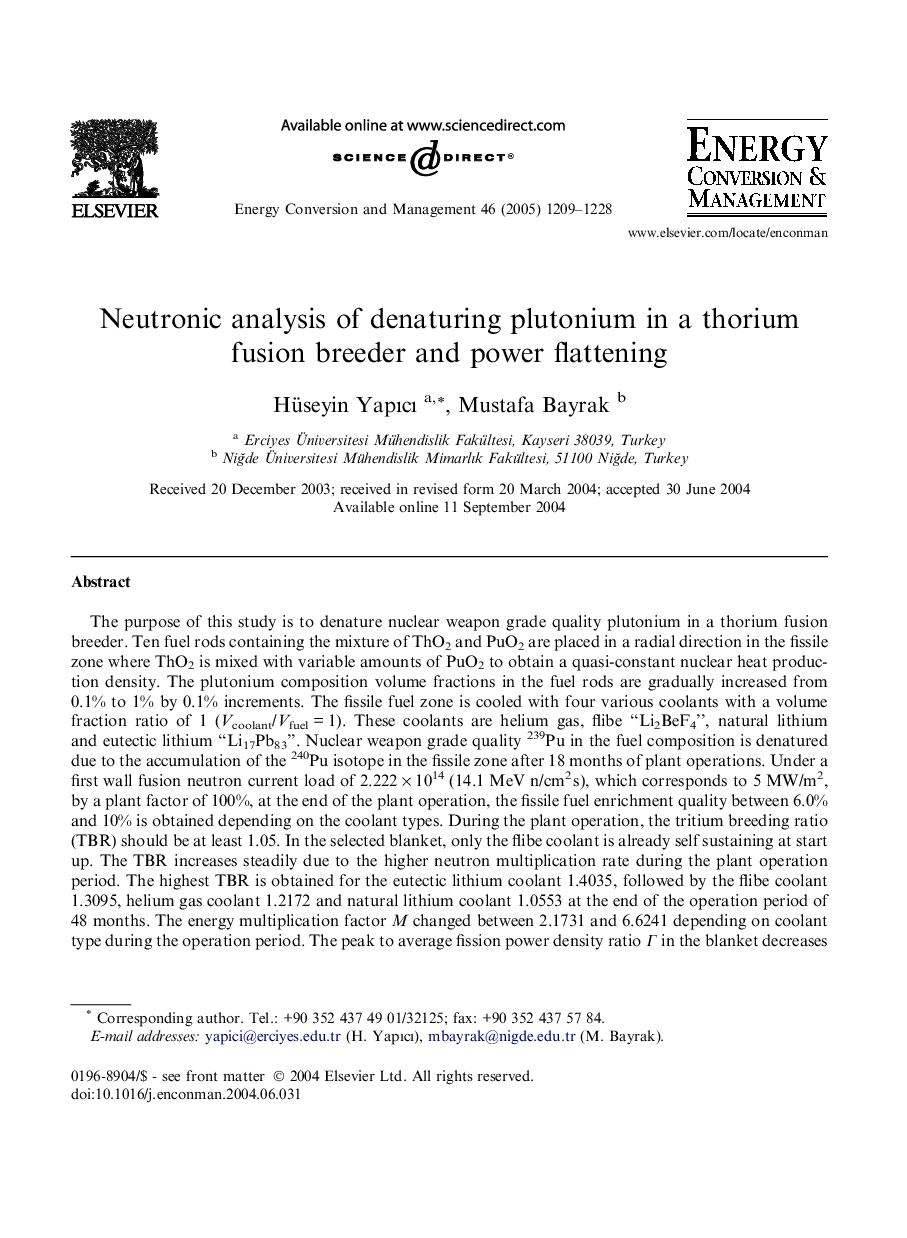| کد مقاله | کد نشریه | سال انتشار | مقاله انگلیسی | نسخه تمام متن |
|---|---|---|---|---|
| 9702793 | 1462921 | 2005 | 20 صفحه PDF | دانلود رایگان |
عنوان انگلیسی مقاله ISI
Neutronic analysis of denaturing plutonium in a thorium fusion breeder and power flattening
دانلود مقاله + سفارش ترجمه
دانلود مقاله ISI انگلیسی
رایگان برای ایرانیان
کلمات کلیدی
موضوعات مرتبط
مهندسی و علوم پایه
مهندسی انرژی
انرژی (عمومی)
پیش نمایش صفحه اول مقاله

چکیده انگلیسی
The purpose of this study is to denature nuclear weapon grade quality plutonium in a thorium fusion breeder. Ten fuel rods containing the mixture of ThO2 and PuO2 are placed in a radial direction in the fissile zone where ThO2 is mixed with variable amounts of PuO2 to obtain a quasi-constant nuclear heat production density. The plutonium composition volume fractions in the fuel rods are gradually increased from 0.1% to 1% by 0.1% increments. The fissile fuel zone is cooled with four various coolants with a volume fraction ratio of 1 (Vcoolant/Vfuel = 1). These coolants are helium gas, flibe “Li2BeF4”, natural lithium and eutectic lithium “Li17Pb83”. Nuclear weapon grade quality 239Pu in the fuel composition is denatured due to the accumulation of the 240Pu isotope in the fissile zone after 18 months of plant operations. Under a first wall fusion neutron current load of 2.222 Ã 1014 (14.1 MeV n/cm2 s), which corresponds to 5 MW/m2, by a plant factor of 100%, at the end of the plant operation, the fissile fuel enrichment quality between 6.0% and 10% is obtained depending on the coolant types. During the plant operation, the tritium breeding ratio (TBR) should be at least 1.05. In the selected blanket, only the flibe coolant is already self sustaining at start up. The TBR increases steadily due to the higher neutron multiplication rate during the plant operation period. The highest TBR is obtained for the eutectic lithium coolant 1.4035, followed by the flibe coolant 1.3095, helium gas coolant 1.2172 and natural lithium coolant 1.0553 at the end of the operation period of 48 months. The energy multiplication factor M changed between 2.1731 and 6.6241 depending on coolant type during the operation period. The peak to average fission power density ratio Î in the blanket decreases by â¼15%, which allows a more uniform power generation in the fissile zone. The isotopic percentage of 240Pu reaches higher than 5% in all coolant types. This is very important for international safety.
ناشر
Database: Elsevier - ScienceDirect (ساینس دایرکت)
Journal: Energy Conversion and Management - Volume 46, Issues 7â8, May 2005, Pages 1209-1228
Journal: Energy Conversion and Management - Volume 46, Issues 7â8, May 2005, Pages 1209-1228
نویسندگان
Hüseyin Yapıcı, Mustafa Bayrak,